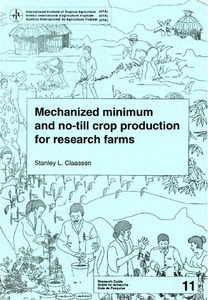Improving the productivities of cowpeacereal systems in the savannas of West Africa through dissemination of improved varieties and cropping systems
Abstract
Cowpea (Vigna unguiculata [L.] Walp.) is the most important grain legume in the dry savannas of West Africa, however grain and fodder yields are low (averaging 25 to 300 kg and 450 to 800 kg grain and fodder/ha, respectively) due to biotic and abiotic constraints. Improved varieties and cropping systems are continuously being developed to tackle the various constraints and some of the results have shown promises in limited on-farm trials in the past. Recently IITA, in collaboration with several partners, was involved in mass dissemination of some of these cowpea varieties and cropping systems in the dry savanna regions of Nigeria and Niger. This paper describes the on-farm results of several of the disseminated technologies in the dry savannas of Nigeria and Niger. In the northern Guinea savanna Zone (NGS), maize-double cowpea strip cropping, cowpea−maize−cowpea, and maize−cowpea relay systems are spreading among farmers. In the Sudan savanna zone (SS), cowpea−cereal strip cropping system and cereal−cowpea relay using extra-early maize varieties and medium or dual-purpose drought tolerant cowpea varieties are adopted and adapted by farmers. In the Sahel of Niger Republic, cowpea−cereal strip cropping and sole cowpea in dry season for fodder and grain are practiced. In NGS, cowpea grain yield ranged from 1.4 to 1.8 t/ha and maize yield ranged from 1.5 to 2.2 t/ha depending on the system. Cowpea grain yields in SS ranged from 0.8 to 1.4 t/ha and cereals grain yield ranged from 0.8 to 1.9 t/ha, while in the Sahel grain yield of cowpea ranged from 0.6 to 1.7 t/ha and cereal yields of 0.6 to 1.2 t/ha. It was concluded that adoption of improved cowpea varieties in improved cropping systems is raising the average yield of cowpea in the dry savannas of West Africa.

